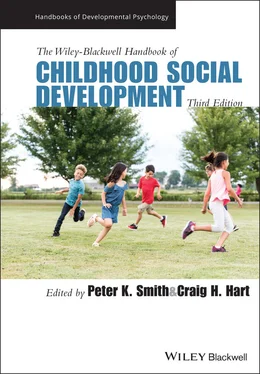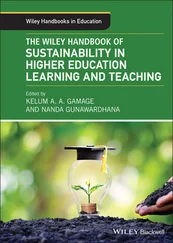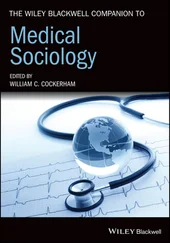Importantly, Bowlby labelled the time, place, and conditions under which the evolution of Homo sapiens took place as the “environment of evolutionary adaptedness” (EEA, Barkow et al., 1992). The EEA has subsequently become an important concept in the development of evolutionary psychology (Workman & Reader, 2021). Today the EEA is particularly associated with the Pleistocene epoch, between 2.5 million and 11,700 years before the present (YBP). Of course, there was never a single EEA, our ancestors lived in a variety of habitats at any given point, while these habitats and the social structures associated with them themselves changed over time (Barkow, 1989). But some aspects of the EEA were very resistant to change and the mother–infant bond is one of these. During his later years, Bowlby came to be so convinced of the importance of the EEA to a species’ evolution that he suggested:
Not a single feature of a species’ morphology, physiology, and behavior can be understood or even discussed intelligently except in relation to that species’ environment of evolutionary adaptedness.
(Bowlby, 1969, p. 64)
In terms of early social development, Bowlby suggested human infants have five adaptive attachment responses: Suckling, Crying, Clinging, Smiling, and Following. While suckling, clinging and (when a little older) following, all maintain close contact, smiling and crying make the caregiver aware of the neonate’s internal state. Importantly, smiling also helps to strengthen the social bond between the two. To Bowlby these important attachment behaviors help to provide a secure base, to which, as infants develop and explore, they are able to return.
Bowlby suggested children growing up in secure environments with responsive caregivers come to establish an internal working model (IWM) that includes the view that relationships are built on empathy and mutual support. In contrast, children growing up with unresponsive or absent caregivers develop an IWM that views relationships with mistrust. Bowlby considered the IWM to be formed by around the age of three. To him, parental deprivation leads to negative consequences for the infant that endure into later life. Such consequences include increased aggressive behavior, teenage delinquency, and a greatly increased likelihood of developing psychopathic behavior. He called this notion of a direct relationship between maternal deprivation and antisocial behavior the maternal deprivation hypothesis .
Mary Ainsworth–strange situations
During the 1960s and 1970s, a co‐worker of Bowlby’s, Mary Ainsworth, developed a method of studying this maternal deprivation hypothesis. Ainsworth (1967) developed a procedure for observing the effects of brief maternal separation in the lab. This involved the observation of infant behavior during the mother’s brief disappearance from the room, after which a stranger enters and remains until the mother reappears. For obvious reasons she called this the strange situation procedure. Ainsworth noted that, while infants generally cry when the mother leaves the room, their response when she reappears seemed to fall broadly into one of three forms. Based on these observations, Ainsworth (1967) suggested infants form one of three attachment styles:
Secure attachment (type B)–cries when mother disappears but is a quite rapidly comforted on her return.
Insecure avoidant attachment (type A)–shows less distress when mother disappears and is as easily comforted by the stranger as by the mother.
Insecure resistant attachment (type C)–remains clinging to mother, shows great anxiety when she disappears and difficult to comfort when she returns.
Both Bowlby and Ainsworth uncovered evidence that these early responses to such a brief event are quite accurate predictors of later childhood (and adulthood) relationship issues (Ainsworth, 1989; Ainsworth & Bowlby, 1991). Those classified as forming insecure attachment types (A avoidant, or C resistant) commonly developed dysfunctional relationships with other children and later in their adulthood romantic relationships (Taylor & Workman, 2018).
Although it is clear from the work of Bowlby and Ainsworth that insecure attachments predict poor relationships and an increased chance of dysfunctional behavior later, one question they failed to answer is why do so many infants fall into types A and C? It is now known that around 30% of all infants taking part in such studies fall into these two insecure types of attachment style (Del Giudice & Belsky, 2011). So how might we account for such a remarkably high proportion of deviant and maladaptive behavioral patterns? During the early 1990s some evolutionary psychologists begun to suggest that perhaps such responses were not maladaptive after all.
Building on Bowlby–The Development of Evolutionary Psychology
During the late 1980s and early 1990s two evolutionarily informed areas of the human sciences were developed– human behavioral ecology (HBE) and evolutionary psychology (EP). HBE is based on the notion that, as a response to the ecological pressures of our ancient past, our behavior has evolved to maximize inclusive fitness (that is, the proportion of our genes that is passed on either directly through offspring or indirectly via other kin: Davies et al. 2012). EP has a slightly different focus in that it considers the human mind as the product of evolutionary forces and much of our current behavior, while not necessarily adaptive today, would have been in the EEA (Barkow et al., 1992). Hence, we might feel pleasure at eating sweet and fatty foods, but the current availability of foods rich in sugar and fat often leads to the non‐adaptive state of obesity (overindulgence was rarely an option on the open savannah of the Pleistocene and is extremely rare among extant gathering‐hunting peoples).
In addition to the concept of the EEA, a branch of evolutionary biology known as life history theory has also been incorporated into the development of both HBE and EP. Life history (LH) theory deals with the strategies that animals use to allocate time and energy to the various activities during different stages of their lives (Hill, 1993). LH theory considers the trade‐off that an organism has to make in order to achieve optimal inclusive fitness given the challenges of the environment (including the social environment).
One important trade‐off is how much time and effort to allocate to development prior to reproducing. Generally, there is a trade‐off between number of offspring produced and the level of investment in growth, learning, and maintenance for each offspring produced. For example in mammals, where very large numbers are produced, such as in rabbits (up to 120 offspring each year per female), very little time and effort go into each offspring, which reach reproductive capability quite rapidly. In stark contrast, where small numbers are produced, such as in bonobos (one offspring every 4 years per female), then each has a lengthy period of development prior to reproduction. Where large numbers of offspring are produced with little investment in each, this situation is known as r selection , whereas where very few offspring are produced and each spends a lengthy period of development (and high parental investment) this is known as K selection .
To complicate matters, these two extreme strategies are also known as fast (r) and slow (K) and rather than being two strategies, we should think of them as falling on either end of a spectrum (Rubenstein & Alcock, 2018). Interestingly, in the latter years of the 20th century it became apparent that individuals within a species can also make decisions about whether to concentrate on current (fast/r) or later (slow/K) reproductive effort. As we will see, as part of an LH approach, this fast/r to slow/K continuum has been integrated into our understanding of the relationship between attachment styles and later child (and adult) behavior.
Читать дальше












